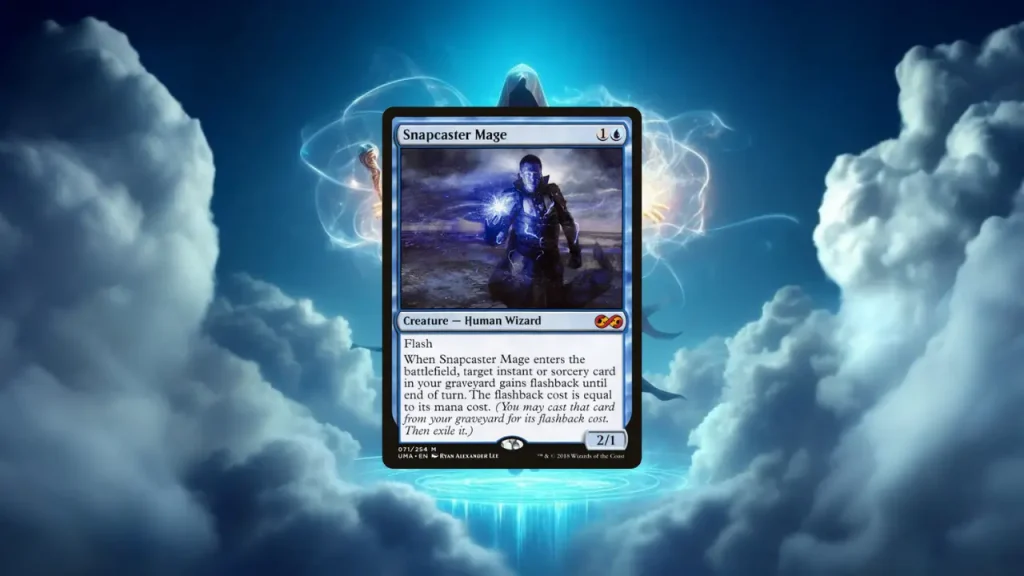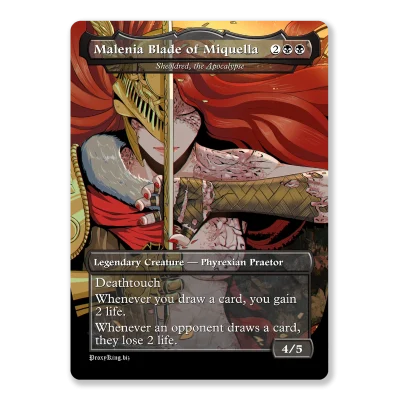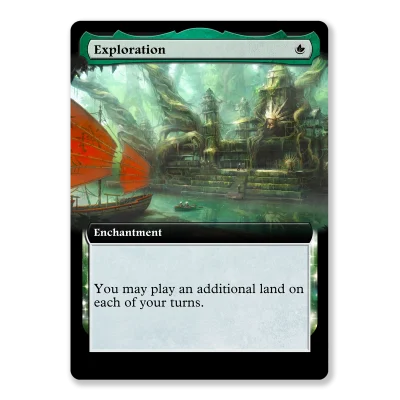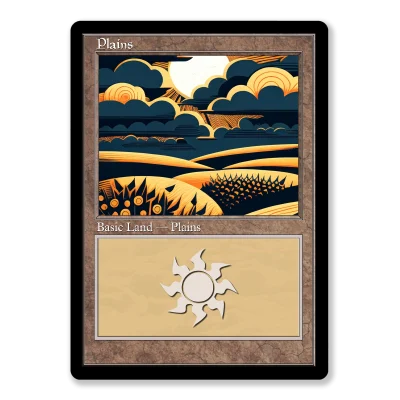In Magic: The Gathering, the flashback mechanic allows players to cast certain instant and sorcery spells from their graveyard by paying an alternative cost. Once a spell cast using flashback has resolved and leaves the stack, it is exiled. This means you can only use the flashback ability of a spell once in most situations, as the spell is removed from the game after its flashback cost is paid and it has been cast.
Flashback stands out as a formidable mechanic in Magic: The Gathering. A common drawback of most instant and sorcery spells is their one-time use. If an opponent manages to navigate and counter a spell, it essentially becomes wasted effort.
However, spells equipped with flashback alter the playing field entirely. They expand your arsenal and introduce elements of surprise that are nearly impossible for your opponent to predict. Below is a comprehensive guide on the flashback mechanic.
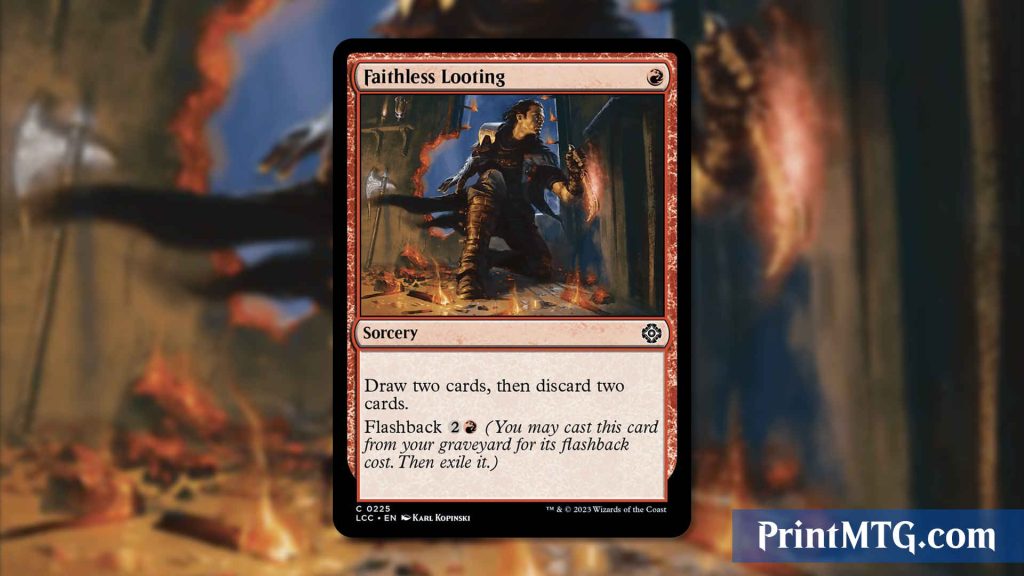
What Is Flashback?
Flashback is a unique ability assigned to certain instant and sorcery spells, allowing them to be cast for an alternative cost from the graveyard.
After a spell cast with flashback has been resolved and leaves the stack, it is exiled. This typically restricts the use of flashback to a single instance per spell, but often, once is all it takes to gain an upper hand.
Whether a card lands in your graveyard by casting, milling, or discarding, as long as it possesses flashback, it can be recast using the flashback cost.
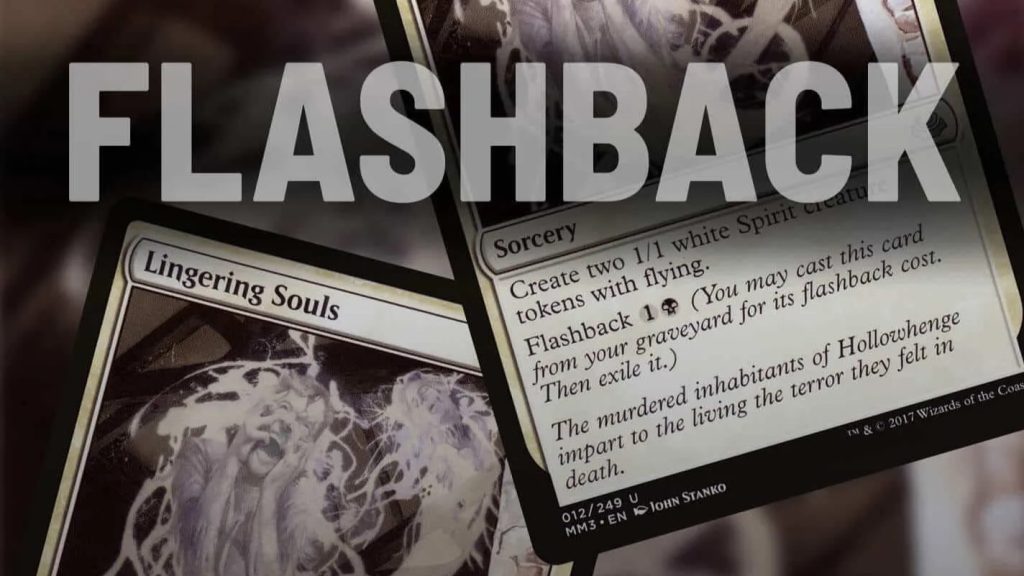
Flashback is defined as a static ability, which means the act of using flashback doesn’t use the stack; it’s an intrinsic capability of the card. However, the spell cast via flashback is subject to normal rules, including responses or counteractions, culminating in the card’s exile.
Like other alternative casting costs, such as mutate or prototype, flashback adheres to specific rules. Notably, multiple alternative casting costs cannot be applied simultaneously. This is crucial for cards that offer another casting method—like Omniscience, which allows free casting, or Underworld Breach, which offers escape. Players must choose between using the flashback cost or another alternative cost, without the possibility of combining them.
Moreover, spells with flashback are subject to the usual timing restrictions—instants can be cast anytime priority is held, while sorceries are limited to your turn during your main phases when the stack is clear.
How To Use Flashback
Spells with flashback possess three primary advantages.
Firstly, they enable the recasting of spells, essentially allowing instants and sorceries to be used twice, which can lead to a significant accumulation of value that may overwhelm your opponent.
For instance, casting Galvanic Iteration from your hand and then using flashback allows the next spell you cast to be copied twice, a strategy that was particularly disruptive during the time Alrund’s Epiphany was in the Standard format.
Secondly, flashback offers a form of card advantage. Maintaining spells in your graveyard for future casting effectively increases your hand size, turning seven cards in hand and three with flashback in the graveyard into a de facto ten-card hand.
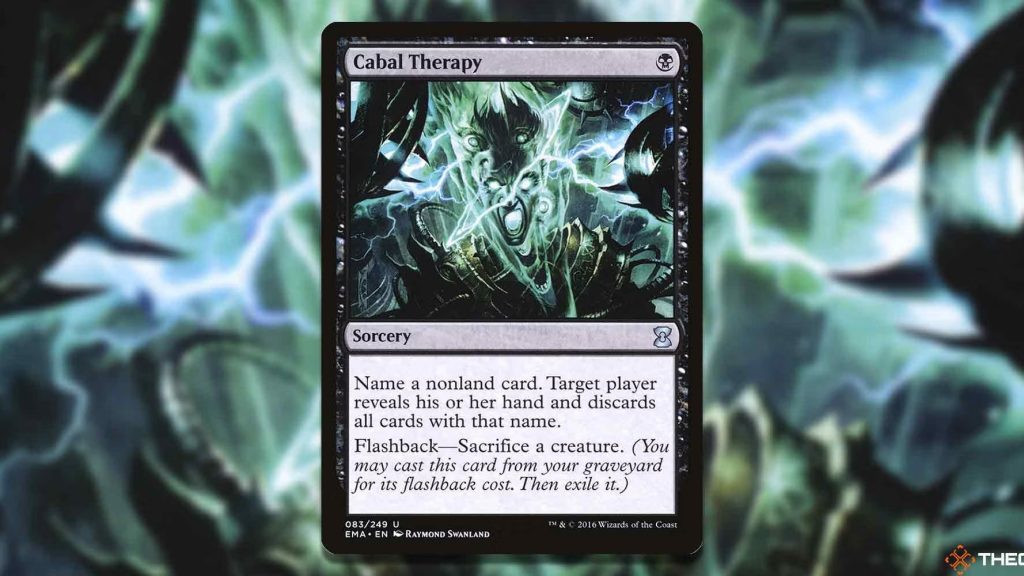
Lastly, flashback applies continuous pressure on your opponent. Since graveyard disruption is relatively rare, a spell capable of being cast from the graveyard represents an ongoing threat. This may force opponents to play more cautiously or save their counterspells for that pivotal moment when Divine Reckoning is ready to be unleashed from the graveyard.
Nevertheless, the biggest challenge for a flashback-focused deck is graveyard disruption. If an opponent can remove cards from your graveyard, using mechanisms like Farewell or Bojuka Bog, your strategy can be severely compromised. While powerful, relying too heavily on flashback can render your deck vulnerable to targeted countermeasures. It’s definitely something worth considering when making MTG cards, or printing proxies.
Flashback Rules
From the Comprehensive Rules
- 702.34.Flashback
- 702.34a Flashback appears on some instants and sorceries. It represents two static abilities: one that functions while the card is in a player’s graveyard and another that functions while the card is on the stack. “Flashback [cost]” means “You may cast this card from your graveyard if the resulting spell is an instant or sorcery spell by paying [cost] rather than paying its mana cost” and “If the flashback cost was paid, exile this card instead of putting it anywhere else any time it would leave the stack.” Casting a spell using its flashback ability follows the rules for paying alternative costs in rules 601.2b and 601.2f–h.
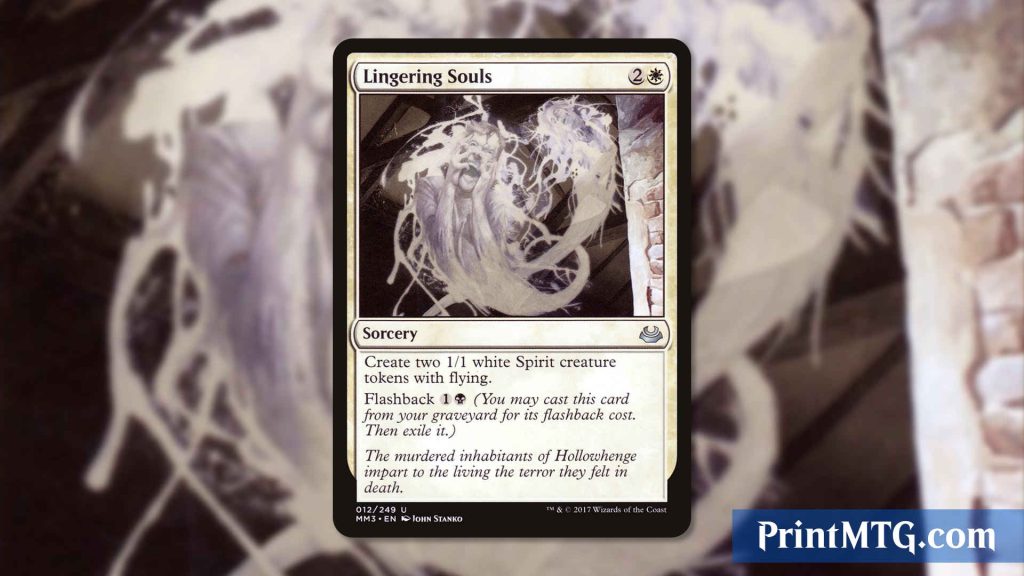
What Color Is Flashback?
As of the release of Dominaria Remastered, there are 168 cards featuring flashback.
The breakdown is as follows: 39 red, 32 green, 31 blue, 23 black, 19 white, and 2 colorless cards, either with flashback or interacting with the mechanic (e.g., Catalyst Stone, which reduces flashback costs).
Additionally, there are 22 multicolored cards with flashback, distributed across various color combinations, highlighting the mechanic’s versatility and widespread use across the color spectrum.

